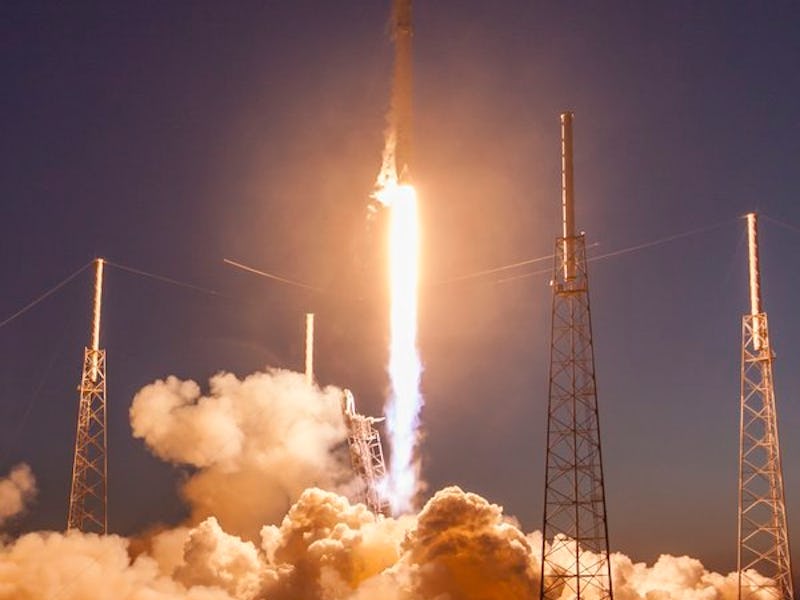Where's the Video of SpaceX's Falcon 9 Rocket "Landing Hard"?
We saw the video last time, what's different this time?

SpaceX successfully launched its Falcon 9 rocket and SES-9 satellite into space Friday, after four scrubbed attempts, but predictably failed to stick the landing later on a droneship at sea.
We say “predictably” because CEO Elon Musk predicted it. After the launch on Friday, Musk posted to Twitter that the rocket was coming in hot on reentry, and “landed hard on the droneship” named Just Read the Instructions, which was stationed roughly 400 miles off the Florida coast.
Previous Falcon 9 crashes have been accompanied by footage just hours later, like back on January 17, when Musk uploaded a video of the rocket landing — but slowly tipping over. It’s intense:
As was the case on Friday, the live feed of the January 17 landing cut out just as it was touching down. Which begs the question, is there video out there of this most recent “hard landing” that hasn’t been released?
A video feed of the landing attempt cut off just as exhaust became visible and roughly 45 minutes passed before anyone knew what had happened and Musk confirmed the crash on Twitter.
Inverse reached out to SpaceX for an update on what footage exists and we’ll update when we hear back.
It wasn’t all bad news: The Falcon 9 was loaded with a communications satellite, one of the heaviest SpaceX has ever managed to launch into the Earth’s orbit. But breaking free of the atmosphere with such a weighty payload meant accelerating at speeds that burn off rocket fuel and contribute to the velocity of re-entry.
The launch was a long time coming. Earlier attempts on February 24 and 25 had to be scrubbed due to worries over the liquid oxygen propellant in the Falcon’s tanks, and a February 28 attempt was delayed because a stray tugboat floated into the restricted zone downrange, forcing the rocket to be held just long enough for the liquid oxygen to overheat. Another attempt on Tuesday was a bust because winds were too high.
So far the Falcon 9 has only ever managed a safe landing on solid ground. This was the fourth attempt — all failed — to get the rocket to land on an autonomous droneship. It’s a problem SpaceX needs to crack, as the circumstances for many missions don’t even make ground landings possible and because sea landings require less fuel which makes them the ideal for missions where the rocket needs extremely high speeds. Like getting that heavy communications satellite in orbit at 22,000 miles above the equator, where it will provide communications services for Northeast Asia, South Asia, and Indonesia.
The Falcon 9 will get another chance on March 29 or 30 when SpaceX launches a resupply mission to the International Space Station for NASA.